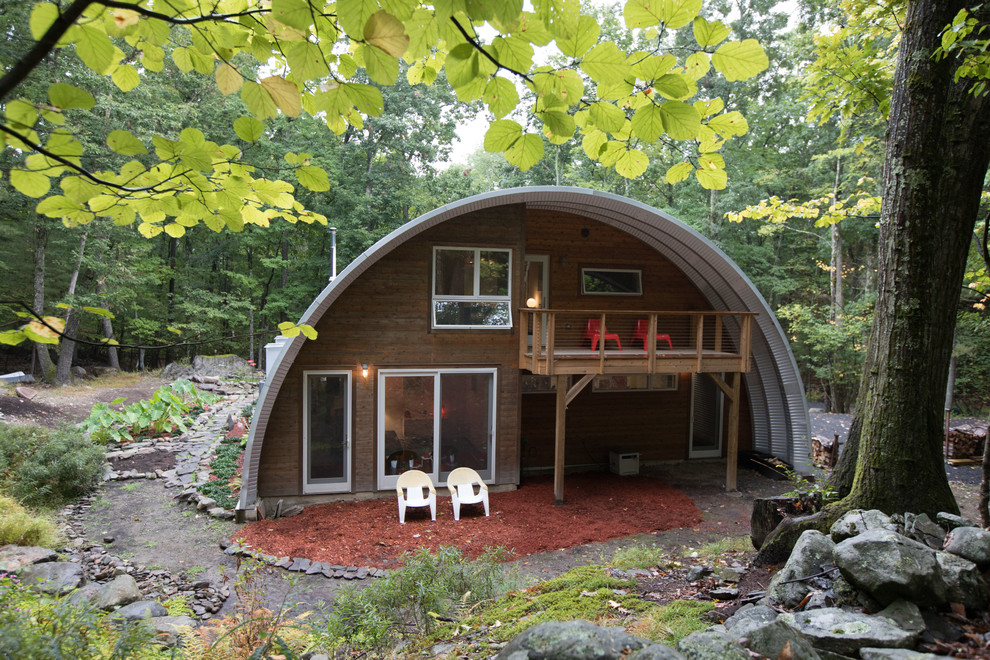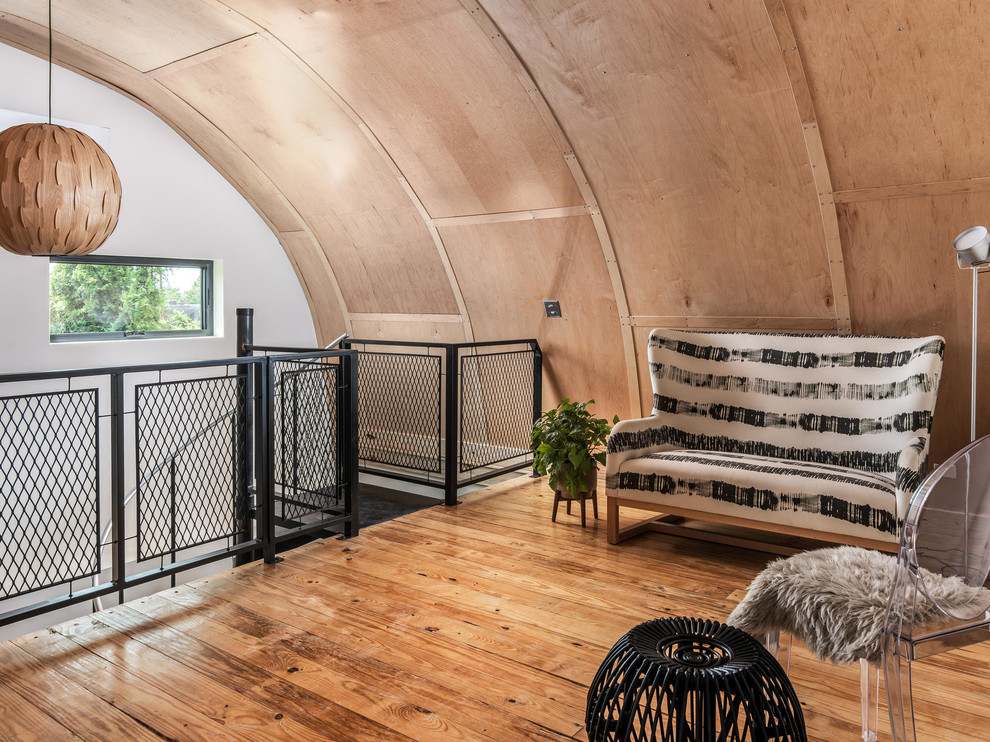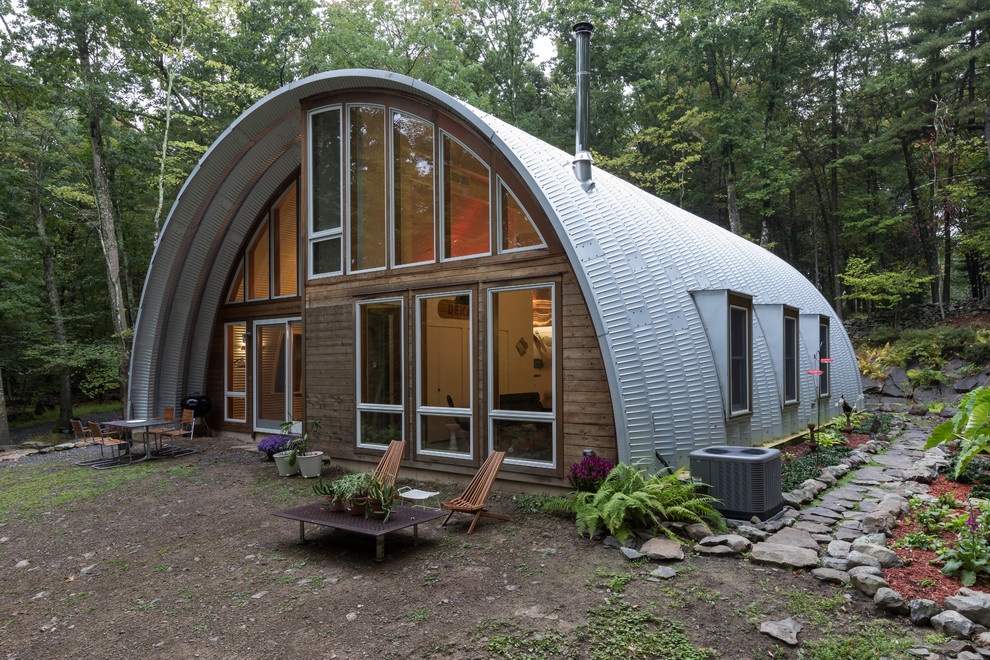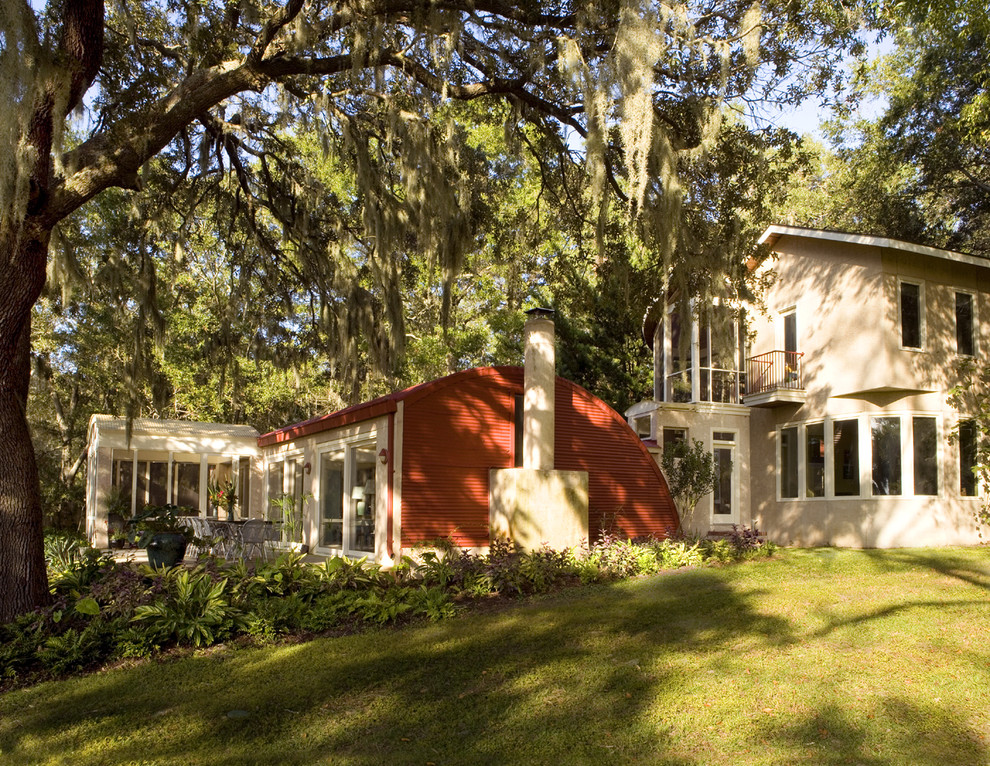Quonset huts, originally designed for military use during World War II, have evolved into an option for those seeking a unique, durable, and cost-effective home. These semi-cylindrical, prefabricated steel structures have gained popularity for their affordability and durability.
However, like any housing choice, they come with their own set of pros and cons. Let’s check the details together but before that, we need to understand what quonset hut home is.
What is a Quonset Hut Home?
A Quonset hut is a prefabricated structure made of steel and having a semicircular cross-section. It’s characterized by its distinctive arch-like shape, which forms both the roof and the walls.

Photo by Coughlin Architecture
Originally designed as a quick and efficient solution for military storage and housing needs, Quonset huts became popular during the war because of their ease of assembly and transport. They could be put together with basic tools, and their simple design made them both durable and versatile.
Evolution into Quonset Hut Homes
After World War II, there was a surplus of Quonset huts, and they began to be repurposed for civilian uses, including as homes. Their affordability, combined with the post-war housing shortage, made them an attractive option for many.
When used as homes, the basic structure of a Quonset hut remains, but the interiors can be customized to fit the needs of the residents. This means that while the exterior keeps the iconic semicircular shape, the inside can be partitioned and designed like a traditional home, with living areas, bedrooms, a kitchen, and a bathroom.

Today, Quonset hut homes represent a niche in the housing market. They are appreciated for their durability and the potential for open-plan layouts. With the rise in popularity of alternative and sustainable housing options, Quonset hut homes have also garnered interest as a choice for those looking for something different from conventional housing.
Pros of Quonset Hut Homes:
- Affordability: One of the primary attractions to Quonset hut homes is their cost-effectiveness. Due to their simple design and the materials used, these structures often come at a fraction of the cost compared to traditional homes.
- Durability: Made from steel, Quonset huts are known for their strength and durability. They are resistant to natural disasters such as hurricanes, tornadoes, and earthquakes, making them ideal for areas prone to such occurrences.
- Fast and Easy Assembly: Quonset huts come in prefabricated kits. This means a reduction in labour costs and a faster construction time, sometimes in as little as a few days.
- Low Maintenance: With fewer parts and a simple structure, maintaining a Quonset hut home is generally easier than traditional homes. Their steel surface also means they are resistant to pests like termites.
- Customizability: While Quonset huts have a distinct curved shape, the interior can be customized to fit a homeowner’s needs. Whether it’s an open-plan space or partitioned rooms, the flexibility is there.

Photo by Coughlin Architecture
Cons of Quonset Hut Homes:
- Thermal Conductivity: Steel isn’t the best insulator. As a result, Quonset huts can become very hot in the summer and cold in the winter. It’s essential to invest in proper insulation to combat this.
- Financing and Insurance Challenges: Due to their unconventional nature, some banks may hesitate to finance Quonset hut homes. Similarly, getting home insurance can sometimes be more challenging or more expensive.
- Limited Aesthetic Appeal: While some appreciate the unique look of Quonset huts, others might find them less aesthetically pleasing than traditional homes. Their distinctive appearance might not blend well in all neighbourhoods.
- Condensation Issues: Steel structures can be prone to condensation, which can lead to mold and mildew if not properly addressed. Adequate insulation and ventilation are crucial.
- Space Limitations: The curved walls of the Quonset hut can limit the usable space on the sides of the building. This can make furniture placement and storage a bit tricky.

Photo by Frederick + Frederick Architects
What to Consider Before Buying a Steel Quonset Hut
Is a Quonset hut home right for you? Here are some of the common things to consider before buying a steel Quonset hut:
- Location and Climate: Before buying, consider the climate of your location. If it’s an area with extreme temperatures, extra insulation will be necessary.
- Permitting: Check with local authorities about permits for building a Quonset hut. Some areas may have restrictions or specific requirements.
- Resale Value: Given their unique nature, selling a Quonset hut home in the future might pose some challenges. Consider the potential resale value and market appeal.
- Customization Costs: While the basic structure might be affordable, customization can increase costs significantly. Factor in these potential expenses when budgeting.
- Future Needs: Think about your long-term needs. If you plan on expanding your family or require more space in the future, a Quonset hut’s design might pose some limitations.

Photo by Miller’s Residential Creations, LLC
Before deciding on a Quonset hut for your home plans, weigh these pros and cons carefully and consult with professionals who specialize in alternative housing solutions. With the right preparation and customization, a Quonset hut can become a comfortable and stylish place to call home.
The post Quonset Hut Homes Pros & Cons: Is It Right For Your Home Plans? appeared first on YourAmazingPlaces.com.
from YourAmazingPlaces.com https://ift.tt/t8ogVA2








0 comments:
Post a Comment